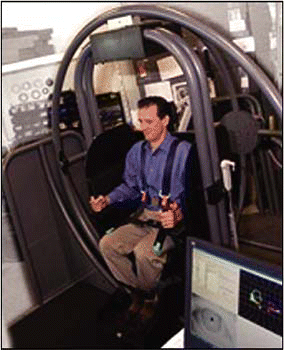Vertigo is a complaint that often causes patients to seek a consultation with an otolaryngologist. While vertigo-or dizziness-can be a symptom of an underlying medical, neurological, or otologic disorder, the most common cause is benign paroxysmal positional vertigo (BPPV). BPPV is a condition that is usually easy to diagnose and can often be treated in the physician’s office using noninvasive techniques.
Explore This Issue
February 2008Approximately half of all cases of BPPV are considered primary or idiopathic. Secondary causes of BPPV include head trauma, viral labyrinthitis, Ménière’s disease, migraines, and ear surgery. BPPV can occur in individuals of all ages, but it is more common in people over 50 years of age.
Diagnosis
BPPV is diagnosed using the Dix-Hallpike maneuver. The patient is quickly taken from a sitting to a prone position with the head hanging over the end of the examining table and turned approximately 45 degrees to the side being tested. The physician then examines the patient’s eyes for nystagmus.
A patient with torsional nystagmus beginning a few seconds after the Dix-Hallpike maneuver almost certainly has BPPV; however, a negative Dix-Hallpike does not automatically rule it out. Dispersion of the particles from the patient’s normal movements throughout the day can result in a negative Dix-Hallpike examination in a patient suffering from BPPV.
Gerard Gianoli, MD, of The Ear and Balance Institute in Baton Rouge, LA, said, If someone has a very clear history for BPPV, and the Dix-Hallpike test is normal, I’ll bring them back first thing in the morning to repeat the test. If that one is normal, I’ll bring them back at least a third time before ruling out BPPV.

Traditional Treatment Options
BPPV is essentially a self-limiting condition, which will often resolve spontaneously if left untreated. However, waiting several weeks, months, or even years for symptoms to resolve can have a significantly negative impact on the patient’s quality of life.
Traditionally, vestibulosuppressant medications have been used to treat vertigo, but they have met with only limited success. Medication may provide minimal relief for some patients, but it is designed to treat the symptom of vertigo, not the underlying cause. Vestibulosuppressant medications can also have undesirable side effects, such as grogginess and sleepiness.1
Vestibular rehabilitation therapy (VRT) is a noninvasive approach that has been used in the past to treat BPPV with limited effectiveness. Through repeated positional and balance exercises, the goal of VRT is to desensitize the balance system to the movements that cause the patient’s feelings of vertigo. The primary drawback to VRT is that it takes several sessions to achieve any result, and the treatment itself induces repeated bouts of vertigo for the patient. Repeated therapy sessions can also be quite costly.1,2
Canalith Repositioning
For more than a decade, canalith repositioning techniques have been used to treat BPPV with good success and are now generally considered to be the standard of care. The Epley maneuver and the Semont maneuver, named after their inventors, have both shown high rates of resolution of BPPV when performed correctly. Both procedures involve moving the patient through a series of positions designed to guide the displaced octoconia that cause BPPV into a less sensitive location. The primary difference between the two procedures is that the Semont maneuver uses quick, forceful movement of the patient, whereas the Epley maneuver is gentler, relying on gravity more than inertia to move the octoconia through the canals.
Leave a Reply